 Map of South Asia | |
| Date | May - October 2021 |
|---|---|
| Location | Afghanistan, India, Bangladesh, Nepal, Pakistan, Sri Lanka |
| Cause | Heavy monsoon rains |
| Deaths | 1,287 |
After over 6,500 people died in flooding in 2020, monsoon floods hit South Asia again in 2021.
 Map of South Asia | |
| Date | May - October 2021 |
|---|---|
| Location | Afghanistan, India, Bangladesh, Nepal, Pakistan, Sri Lanka |
| Cause | Heavy monsoon rains |
| Deaths | 1,287 |
After over 6,500 people died in flooding in 2020, monsoon floods hit South Asia again in 2021.
In early May, flooding in northern Afghanistan killed 37 people. Over 200 homes were damaged or destroyed. [1]
From late July to August, 113 people died in flooding in Nuristan Province. [2]
Floods in July affected Cox’s Bazar, Bangladesh, killing 8 people, half of whom were children. [3]
Floods hit the Indian state of Uttarakhand, causing an avalanche that killed 83 people and left 121 others missing. [4]
Cyclone Tauktae affected southern India, killing 169 people. [5] Shortly after, Cyclone Yaas killed a further 20 people. [6]
Floods from July to August affected the state of Maharashtra, killing 251 people and leaving many more missing. [7] Before the floods had occurred, the heavy rains had caused a landslide to destroy several homes in the city of Mumbai, killing 32 people. [8] [9]
In late July, heavy rain resulted in floods which killed 7 and left 19 missing in Jammu and Kashmir. [10]
In Madhya Pradesh, 24 people were killed by floods in August. [11]
Floods and landslides in September killed 180 people in Maharashtra. [12]
In the states of Kerala and Uttarakhand, 47 people died in floods that occurred in October. [13] [14]
In October, floods in western Nepal killed 88 people and left 30 others missing. [15]
In September, floods have severely affected Pakistan's largest city, Karachi. At least 187 people died due to collapsing homes or from drowning in the city. [16]
From May to November, Sri Lanka experienced major flooding. Four people died in May, [17] 17 in June, [18] and 20 in November. [19]
The Climate of Mumbai is a tropical, wet and dry climate. Mumbai's climate can be best described as moderately hot with a high level of humidity. Its coastal nature and tropical location ensure temperatures do not fluctuate much throughout the year.

A cloudburst is an extreme amount of precipitation in a short period of time, sometimes accompanied by hail and thunder, which is capable of creating flood conditions. Cloudbursts can quickly dump large amounts of water, e.g. 25 mm of the precipitation corresponds to 25,000 metric tons per square kilometre. However, cloudbursts are infrequent as they occur only via the orographic lift or occasionally when a warm air parcel mixes with cooler air, resulting in sudden condensation. At times, a large amount of runoff from higher elevations is mistakenly conflated with a cloudburst. The term "cloudburst" arose from the notion that clouds were akin to water balloons and could burst, resulting in rapid precipitation. Though this idea has since been disproven, the term remains in use.

The 1989 North Indian Ocean cyclone season was a below-average season in annual cycle of tropical cyclone formation. The season has no official bounds but cyclones tend to form between April and December. These dates conventionally delimit the period of each year when most tropical cyclones form in the northern Indian Ocean. There are two main seas in the North Indian Ocean—the Bay of Bengal to the east of the Indian subcontinent and the Arabian Sea to the west of India. The official Regional Specialized Meteorological Centre in this basin is the India Meteorological Department (IMD), while the Joint Typhoon Warning Center (JTWC) releases unofficial advisories. An average of five tropical cyclones form in the North Indian Ocean every season with peaks in May and November. Cyclones occurring between the meridians 45°E and 100°E are included in the season by the IMD.

India is a country in the north of Indian Ocean that is the most vulnerable to getting hit by tropical cyclones in the basin, from the east or from the west.On average, 2–3 tropical cyclones make landfall in India each year, with about one being a severe tropical cyclone or greater.
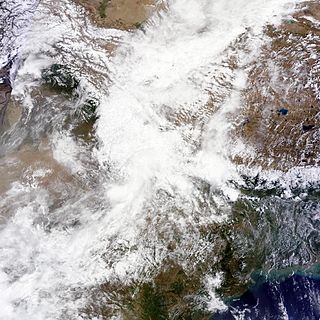
In June 2013, a mid-day cloudburst centered on the North Indian state of Uttarakhand caused devastating floods and landslides, becoming the country's worst natural disaster since the 2004 tsunami. The rainfall received that month was far greater than the rainfall the state usually received. Debris blocked the rivers, causing major overflow. The main day of the flood was 16 June 2013.
This is a list of notable recorded floods that have occurred in India. Floods are the most common natural disaster in India. The heaviest southwest, the Brahmaputra, and other rivers to distend their banks, often flooding surrounding areas.

Cyclonic Storm Roanu was a relatively weak tropical cyclone that caused severe flooding in Sri Lanka and Bangladesh during May 2016. It is the first tropical cyclone of the annual cyclone season. Roanu originated from a low-pressure area that formed south of Sri Lanka, which gradually drifted north and intensified into a cyclonic storm on 19 May. However, wind shear and land interaction caused it to weaken slightly, before reintensifying as it accelerated towards the coast of Bangladesh.
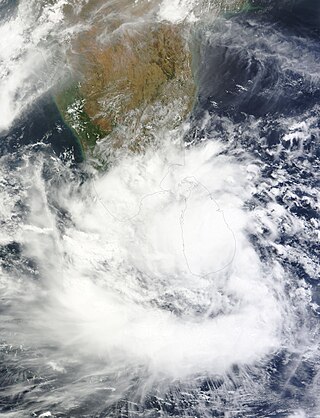
Beginning on 14 May 2016, a low pressure area over the Bay of Bengal caused torrential rain to fall across Sri Lanka, causing floods and landslides which affected half a million people. As of 25 May 2016 the death toll was 101 with 100 missing.
Widespread monsoon flooding occurred in the South Asian countries of Afghanistan, Bangladesh, India, Nepal and Pakistan from July through September 2017. More than 45 million people were affected by the floods, including 16 million children.

The 2021 North Indian Ocean cyclone season was an event in the annual cycle of tropical cyclone formation. The North Indian Ocean cyclone season has no official bounds, but cyclones tend to form between April and December, peaking between May and November. These dates conventionally delimit the period of each year when most tropical cyclones form in the northern Indian Ocean. The season began on April 2, when a depression designated as BOB 01 was formed in the north Andaman Sea and quickly made landfall in Myanmar. The basin remained quiet for over a month before Cyclone Tauktae formed. It rapidly intensified into an extremely severe cyclonic storm before making landfall in Gujarat, become the strongest storm ever to strike that state since the 1998 Gujarat cyclone. Later that month, BOB 02 formed and later strengthened into Cyclone Yaas. Yaas rapidly intensified into a very severe cyclonic storm before making landfall in northwestern Odisha. The season's strongest tropical cyclone was Cyclone Tauktae, with maximum wind speeds of 185 km/h (115 mph) and a minimum barometric pressure of 950 hPa (28.05 inHg).
In mid-March 2019, monsoonal downpours caused widespread flooding and landslides across South Asia.

The following is a list of weather events that occurred in 2021. The year began with La Niña conditions. There were several natural disasters around the world from various types of weather, including blizzards, cold waves, droughts, heat waves, tornadoes, and tropical cyclones. In December, powerful Typhoon Rai moved through the southern Philippines, killing 410 people and becoming the deadliest single weather event of the year. The costliest event of the year, and the costliest natural disaster on record in the United States, was from a North American cold wave in February 2021, which caused $196.4 billion (USD) in damage; the freezing temperatures and widespread power outages in Texas killed hundreds of people. Another significant natural disaster was Hurricane Ida, which struck southeastern Louisiana and later flooded the Northeastern United States, resulting in $70 billion (USD) in damage. December saw two record-breaking tornado outbreaks, only four days apart from each other. In Europe, the European Severe Storms Laboratory documented 1,482 weather-related injuries and 568 weather-related fatalities. The National Oceanic and Atmospheric Administration documented 796 weather-related fatalities and at least 1,327 weather-related injuries in the United States and the territories of the United States.

Extremely Severe Cyclonic Storm Tauktae was a powerful, deadly and damaging tropical cyclone in the Arabian Sea that became the strongest tropical cyclone to make landfall in the Indian state of Gujarat since the 1998 Gujarat cyclone and one of the strongest tropical cyclones to ever affect the west coast of India. The second depression, first cyclonic storm, first severe cyclonic storm, first very severe cyclonic storm, and first extremely severe cyclonic storm of the 2021 North Indian Ocean cyclone season, Tauktae originated from an area of low pressure in the Arabian Sea, which was first monitored by the India Meteorological Department on May 13. The low drifted eastward and organized into a deep depression by May 14. The storm soon took a northward turn, continuing to gradually intensify because of warm waters near the coast, and the system strengthened into a cyclonic storm and was named Tauktae later that same day. Tauktae continued intensifying into May 15, reaching severe cyclonic storm status later that day. Tauktae began to parallel the coast of the Indian states of Kerala, Karnataka, Goa and Maharashtra, before rapidly intensifying into a very severe cyclonic storm, early on May 16. Early on May 17, Tauktae intensified into an extremely severe cyclonic storm, reaching its peak intensity soon afterward. Later that same day, Tauktae underwent an eyewall replacement cycle and weakened, before restrengthening as it neared the coast of Gujarat, making landfall soon afterward.
The 2021 floods and landslides in Sri Lanka are flash floods and mudslides which were caused from heavy torrential rainfalls during May and June 2021. As of 7 June 2021; the monsoon floods affected in about 10 districts, killing at least 17 persons including about 10 because of floods and 4 people because of mudslides. About 245,000 people were affected living in Colombo, Puttalam, Kandy, Kalutara, Kurunegala, Gampaha, Nuwara Eliya, Ratnapura and Galle. More than 800 houses were reported to have been damaged.
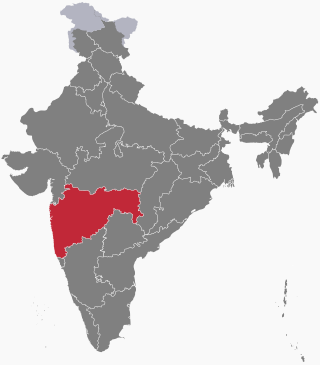
A series of floods took place across the Indian State of Maharashtra in 2021. As of 28 July 2021, around 251 people have died and over 100 are still missing due to floods and landslides. Thirteen districts have been affected in western Maharashtra.
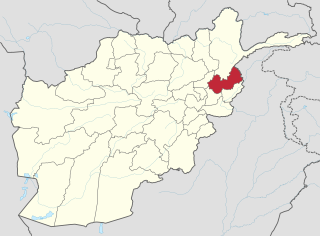
Flooding began in the Kamdesh District in Nuristan, Afghanistan, due to heavy rains. As of July 31, the death toll is at 113 while the number of people missing is unknown. According to Taliban spokesman Zabihullah Mujahed, heavy rain on July 28 caused the flooding.

Throughout 2022, floods affected most of Africa, killing over 2,100 people. The worst affected country was Nigeria, with over 610 deaths.
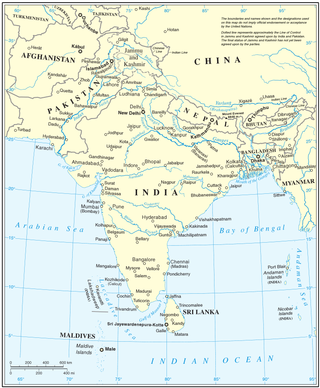
From January to October 2022, excessive rainfall and widespread monsoon flooding occurred in the South Asian countries of Afghanistan, Bangladesh, India, Nepal, Pakistan, and Sri Lanka. It has become the region's deadliest floods since 2020, with over 3,700 people dead.

In 2020, floods have affected South Asia due to heavy monsoon rains. The floods caused $105 billion USD of damage, making it the costliest standalone flood in modern history, and the ninth costliest disaster of all time. In addition there were 6,511 fatalities, the most reported in a flood since Cyclone Sidr in 2007. Floods continued in 2021 and 2022.